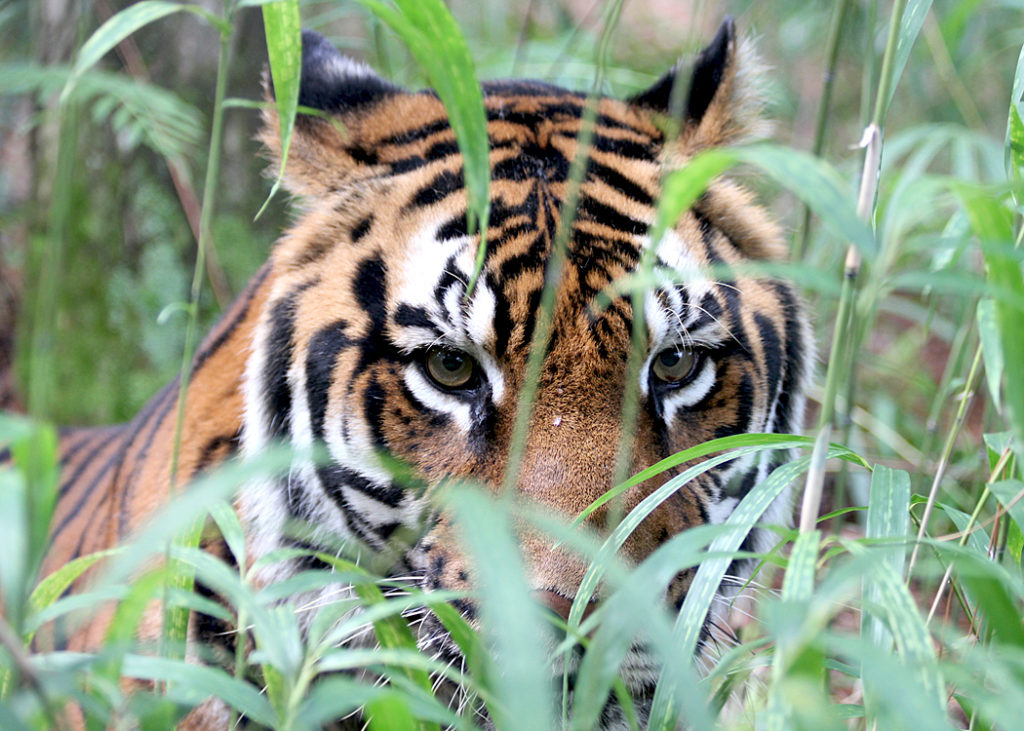The tiger is the only big cat with a striped coat. The stripe pattern works well as camouflage in the dense foliage of forests or tall grasslands that they frequent. They prefer to stalk and ambush their prey. Their size easily allows them to pull down their victims. Tigers are primarily crepuscular, hunting at dusk and dawn. They are usually found in areas close to rivers or other water sources and they seem to enjoy the water, resting and cooling in it. They are also known to chase their prey into the water, which slows the prey down. Tigers are solitary, with males having territories that overlap those of several females. Females give birth to 3-4 per litter. Young tigers will stay with their mothers for 18 months or more, before striking out on their own. Tigers can live 10-15 years in the wild and over 20 years in human care.
There are thought to be fewer than 3,500 tigers left in the wild, according to the International Union for the Conservation of Nature (IUCN); once found as far west as Turkey, they are now only found in South and Southeast Asia, China, and the Russia Far East. Tigers have been eradicated from many parts of their historic ranges as their habitats are destroyed and they are killed as perceived ‘threats’ to humans. However, the biggest threat tigers currently face is poaching for the illegal wildlife trade. Every part of the tiger – from whiskers to tail is valued as traditional medicine, folk remedies, and status symbols in many Asian cultures—the very same demand and subsequent high black market value that threatens the world’s five rhino species.

White Oak currently cares for two young males as part of our cooperative sustainability programs with partner AZA institutions. By housing and caring for these animals, White Oak plays a valuable role in freeing space for active conservation breeding programs at our partner institutions. They also represent a flagship species and apex predator and provide a great opportunity to educate our guests about their plight. Another White Oak species, the Indian rhino, shares its home in Nepal and India with the tiger. Both of these charismatic species benefit from the protection of their shared riverine habitat, as do a multitude of smaller and lesser-known endangered species.
